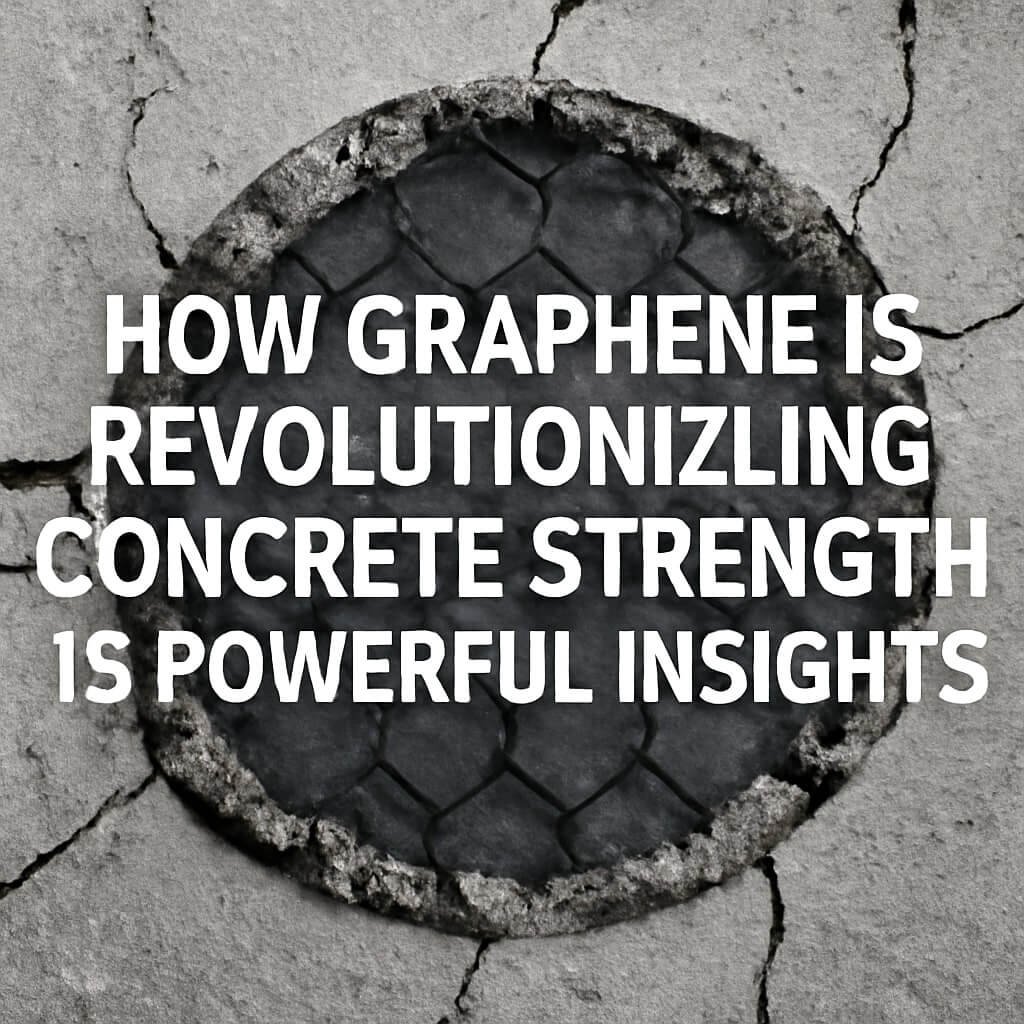Concrete has long been the backbone of modern infrastructure, forming the basis of buildings, bridges, roads, and countless other structures worldwide. Yet, despite its ubiquity, concrete faces notable challenges related to durability, cracking, and environmental impact. Enter graphene—a revolutionary material promising to change the way we think about concrete strength and longevity.
Graphene, often dubbed a “wonder material,” is a single layer of carbon atoms arranged in a two-dimensional honeycomb lattice. It possesses exceptional mechanical, thermal, and electrical properties that have captivated researchers and engineers alike. When incorporated into concrete, graphene’s unique characteristics can significantly enhance the material’s strength, durability, and sustainability.
In this article, we’ll explore 15 powerful insights into how graphene is transforming concrete strength. From understanding the science behind graphene’s properties to real-world applications and prospects, this comprehensive guide will shed light on the revolutionary role graphene plays in concrete technology.
Understanding Concrete Strength and Its Challenges
Concrete is traditionally valued for its compressive strength—the ability to withstand heavy loads pushing inward. However, it struggles with tensile strength, which is the resistance to forces pulling it apart. This imbalance leads to cracking, wear, and eventual structural failure.
Other common challenges include:
- Porosity: Concrete’s porous nature allows water and chemicals to penetrate, accelerating corrosion of embedded steel reinforcement.
- Durability Issues: Exposure to freeze-thaw cycles, chemical attacks, and environmental stresses shortens concrete’s lifespan.
- Environmental Impact: Cement production, a key component of concrete, contributes significantly to global CO2 emissions.
Addressing these issues without compromising cost-effectiveness is a critical goal for the construction industry. The integration of advanced materials like graphene opens exciting new avenues to overcome these long-standing problems.
What is Graphene?
Graphene is a one-atom-thick sheet of carbon atoms tightly packed in a hexagonal lattice. Since its isolation in 2004, it has become one of the most studied materials due to its extraordinary properties:
- Mechanical Strength: Over 100 times stronger than steel by weight.
- Flexibility: Can be bent without breaking.
- Electrical and Thermal Conductivity: Excellent conductors.
- Lightweight: Nearly transparent with minimal weight addition.
These features make graphene an ideal additive for strengthening materials like concrete, where enhanced toughness and crack resistance are essential. Its atomic thinness also ensures minimal alteration to the concrete’s density or workability.
How Graphene Enhances Concrete Strength
Integrating graphene into concrete leads to multiple improvements, mainly because graphene acts as a nano-reinforcement that bridges micro-cracks and refines the concrete microstructure.
Graphene’s Impact on Compressive Strength
Adding graphene boosts the concrete’s ability to bear heavy compressive loads. It optimizes the cement hydration process, producing a denser matrix and reducing micro-pores that can cause weakness.
Graphene’s Effect on Tensile Strength
Graphene’s exceptional tensile strength transfers to the composite material, increasing its resistance to cracking and stretching forces. This helps concrete resist stress from loads, temperature changes, and settling.
Resistance to Cracking and Wear
Micro-cracks are the main cause of concrete degradation. Graphene’s presence inhibits crack propagation by distributing stress more evenly throughout the material. This enhances durability, wear resistance, and lifespan.
Practical Applications of Graphene-Enhanced Concrete
Graphene concrete is finding use in diverse sectors such as:
- Infrastructure: Bridges, tunnels, and roads benefit from longer service life and less maintenance.
- Buildings: Structural components become stronger and lighter.
- Industrial Flooring: Improved resistance to abrasion and chemicals.
- Marine Structures: Enhanced resistance to corrosion from seawater.
The material’s ability to extend the lifespan of concrete components reduces repair costs and environmental footprint, making it an attractive choice for sustainable construction.
Environmental Benefits of Using Graphene in Concrete
Concrete production is a major contributor to global CO2 emissions. Graphene-enhanced concrete offers environmental advantages:
- Lower Cement Usage: Higher strength allows for less cement needed per volume.
- Longevity: Longer-lasting concrete reduces the frequency of reconstruction.
- Energy Efficiency: Enhanced thermal properties can improve building insulation.
These factors collectively contribute to a smaller carbon footprint and support the push for greener building materials.
Challenges and Limitations of Graphene in Concrete
Despite its benefits, graphene integration in concrete faces some hurdles:
- Cost: High-quality graphene production remains expensive.
- Dispersion: Ensuring uniform distribution of graphene within the concrete mix is technically challenging.
- Scalability: Large-scale manufacturing and application need refinement.
- Standardization: Lack of standardized guidelines for graphene concrete use slows adoption.
Ongoing research is addressing these issues to unlock the full potential of this groundbreaking material.
Case Studies of Graphene Concrete in Action
Several projects worldwide have demonstrated graphene concrete’s promise:
- In the UK, graphene concrete was used in a bridge project, exhibiting enhanced durability and reduced cracking after testing.
- A construction company in China developed graphene-based cement that achieved 50% higher compressive strength.
- Industrial floors in factories using graphene concrete showed improved resistance to heavy wear and chemical spills.
These cases highlight tangible benefits and encourage broader industry acceptance.
Future Trends: The Next Generation of Graphene Concrete
Looking ahead, innovations may include:
- Hybrid Nanomaterials: Combining graphene with other nanomaterials for multifunctional concrete.
- Self-Healing Concrete: Graphene’s properties facilitate self-repair mechanisms.
- Smart Concrete: Integrating sensors with graphene for real-time structural health monitoring.
As technology advances, graphene concrete could redefine construction standards, combining strength, intelligence, and sustainability.
Frequently Asked Questions (FAQs)
1. What makes graphene better than traditional concrete additives?
2. Can graphene concrete be used in all types of construction?
3. Is graphene concrete cost-effective?
4. How does graphene affect concrete’s environmental footprint?
5. Are there any health risks associated with graphene in construction?
6. When will graphene concrete become mainstream?
Conclusion: The Lasting Impact of Graphene on Concrete
Graphene is poised to revolutionize concrete technology by dramatically improving strength, durability, and sustainability. While challenges remain, ongoing advances in material science and engineering are steadily unlocking graphene’s full potential. The future of construction looks stronger, smarter, and greener thanks to this remarkable material.

